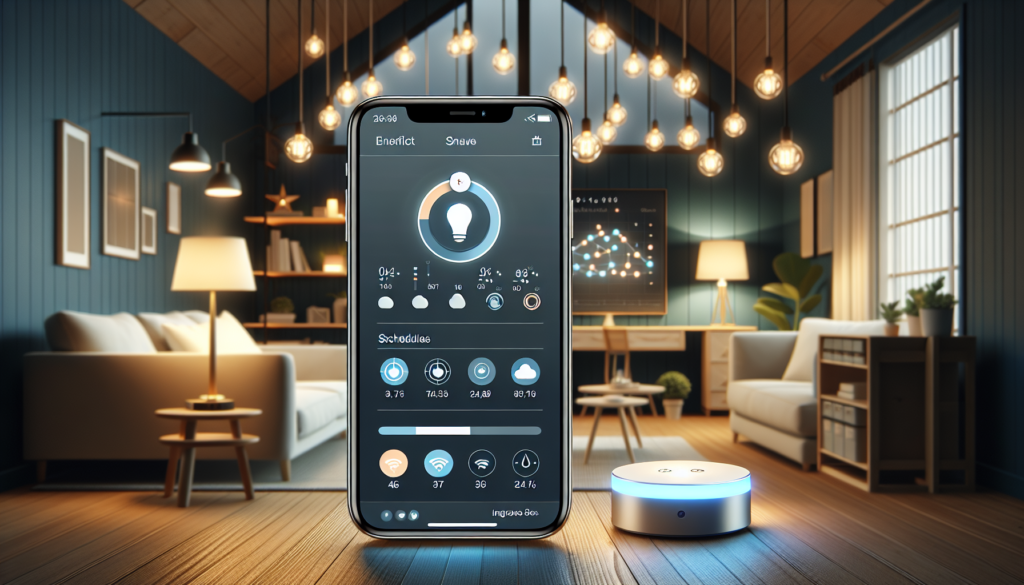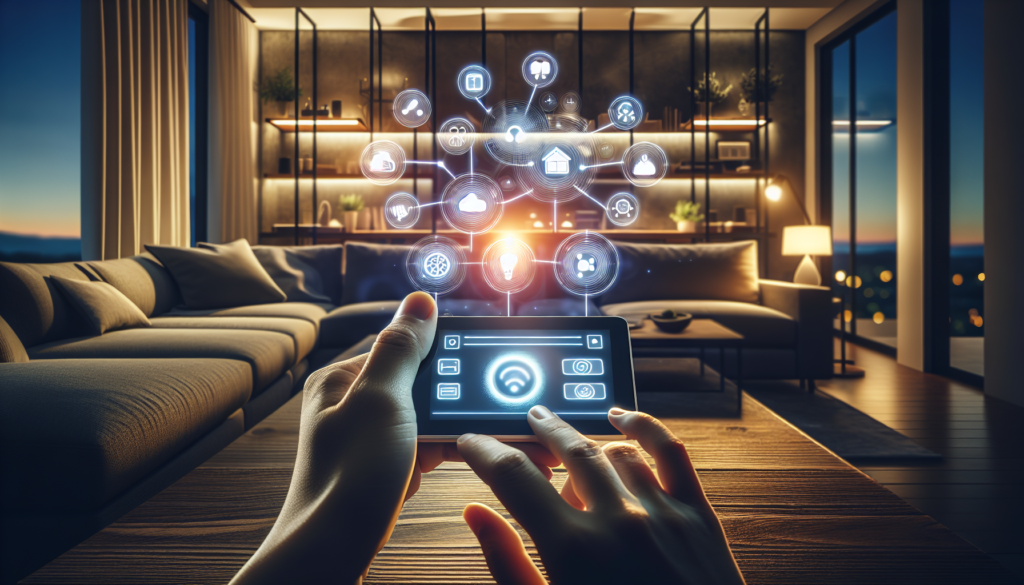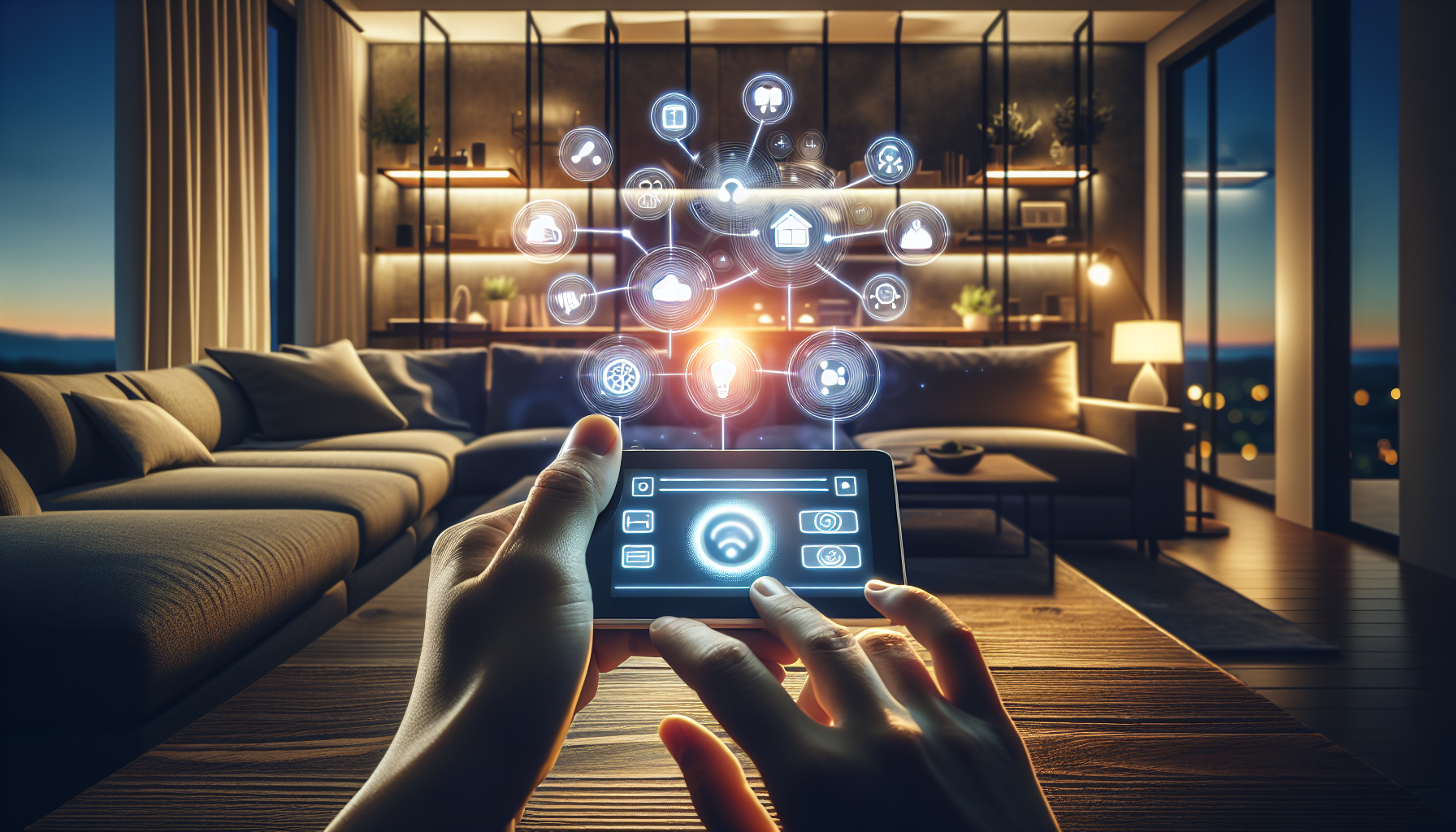Imagine being able to control the lighting in your home with just a touch of a button or a simple voice command. The convenience and efficiency of smart lighting control systems have revolutionized the way we illuminate our spaces. With the ability to set schedules, adjust brightness, and even change colors, these state-of-the-art systems offer not only a new level of convenience but also an unprecedented level of energy efficiency. Whether you are looking to create the perfect ambiance for a cozy movie night or save on electricity bills, smart lighting control is the answer you’ve been searching for. Smart lighting control is a technology that allows you to control the lighting in your home or office through various methods, such as motion sensors, occupancy sensors, light sensors, timers, and manual control. This technology offers a wide range of advantages, including energy efficiency, cost savings, convenience, and comfort. In this article, we will explore these advantages in detail, discuss different methods of smart lighting control, explore various smart lighting control technologies, compare wireless and wired systems, discuss integration with home automation systems, and examine the applications of smart lighting control. We will also touch on important considerations to keep in mind when implementing smart lighting control. By the end of this article, you will have a comprehensive understanding of smart lighting control and its benefits.
Energy Efficiency
One of the key advantages of smart lighting control is its energy efficiency. With traditional lighting systems, it is common for lights to be left on when not needed, resulting in unnecessary electricity consumption. Smart lighting control addresses this issue by automatically turning lights on and off based on occupancy or daylight availability. For example, motion sensors can detect when someone enters or leaves a room, and will automatically turn the lights on or off accordingly. This eliminates the need for manual control and reduces energy waste. By optimizing lighting usage, smart lighting control can help reduce energy consumption and lower your energy bills.
Cost Savings
In addition to energy efficiency, smart lighting control can also lead to significant cost savings. By reducing energy consumption, you can expect to see a decrease in your electricity bills. Furthermore, smart lighting control technologies, such as dimmers and switches, allow for precise control over lighting levels, enabling you to create custom lighting scenes that suit your needs and preferences. This can help extend the lifespan of your light bulbs, resulting in fewer bulb replacements and cost savings in the long run. Additionally, some smart lighting control systems offer scheduling and automation features, which allow you to set specific times for lights to turn on or off. This can be particularly useful when you’re away from home and want to create the illusion that someone is there, enhancing security and providing peace of mind.

Convenience and Comfort
Another major advantage of smart lighting control is the convenience and comfort it offers. Traditional lighting systems often require manual control, where you have to physically turn lights on and off, adjust brightness levels, or change lighting scenes. With smart lighting control, all of these tasks can be done through automated processes or with the touch of a button on a smartphone or smart home hub. This level of convenience allows you to easily control the lighting in your home or office from anywhere, at any time. Moreover, smart lighting control technologies can enhance your overall comfort by providing the perfect level of lighting for different activities, such as reading, studying, or relaxing. By adjusting the lighting to suit your needs, you can create a more comfortable and enjoyable space.
Different Methods of Smart Lighting Control
There are several different methods of smart lighting control available, each with its own benefits and applications. One common method is the use of motion sensors. Motion sensors detect movement within a defined area and can automatically turn lights on when someone enters the room, and off when the room is vacant. This is particularly useful in spaces like hallways, bathrooms, or closets, where lights are often left on and forgotten. Another method is the use of occupancy sensors, which go beyond motion detection and can also sense if a person is actively using the space. This allows for more accurate control of lighting based on actual occupancy. Light sensors, on the other hand, measure the amount of natural light in a room and can adjust artificial lighting accordingly, maximizing energy savings and creating a balanced lighting environment.
Timer-based control is another method of smart lighting control that allows you to set specific times for lights to turn on or off. This can be useful for creating a consistent lighting schedule or for enhancing security when you’re away from home. Lastly, manual control is a basic method that allows you to manually control the lighting in your space through switches or dimmers. While it may not offer the same level of automation as other methods, manual control is still an important component of smart lighting control, providing flexibility and personalization.

Smart Lighting Control Technologies
To implement smart lighting control, various technologies can be used, each with its own features and advantages. Dimmers are a popular choice as they allow you to adjust the brightness levels of your lights, creating different moods and atmospheres in a room. Dimmers provide flexibility and control over lighting intensity, which can enhance comfort and save energy. Switches, on the other hand, offer a more straightforward on/off control of lights. With smart switches, you can turn lights on or off remotely using your smartphone, or you can program them to be activated based on specific conditions or events.
Smart bulbs are another technology used in smart lighting control. These are light bulbs that can be controlled wirelessly through a smartphone or smart home hub. Smart bulbs often offer additional features, such as color changing capabilities or the ability to be dimmed without the need for a dimmer switch. Wireless lighting controls, such as wireless lighting modules or wireless lighting switches, provide a convenient way to control your lights without the need for complicated wiring. They offer flexibility in terms of placement and can be easily added to existing lighting systems.
Wireless vs Wired Smart Lighting Control Systems
When implementing a smart lighting control system, you have the option of choosing between wireless and wired systems. Wireless systems offer the advantage of easy installation and flexibility. They allow you to control your lights remotely through a smartphone or smart home hub, eliminating the need for manual control. Wireless systems also offer scalability, meaning you can easily add or remove smart lighting devices as needed. However, wireless systems may be subject to interference and signal loss, especially in larger spaces or homes with thick walls. Additionally, they may require the use of batteries, which need to be replaced periodically.
On the other hand, wired systems provide a more reliable and secure connection. They are less prone to interference or signal loss and are generally more suitable for larger spaces or commercial applications. Wired systems also don’t rely on batteries, eliminating the need for replacements. However, wired systems require professional installation and may involve more complex wiring. They also have limited flexibility in terms of adding or relocating smart lighting devices, as each device needs to be connected to the wired network.
Integration with Home Automation Systems
Smart lighting control can be integrated with home automation systems, allowing you to control your lights alongside other smart devices in your home. Compatibility with smart home platforms, such as Amazon Alexa or Google Assistant, allows you to control your lights using voice commands. This offers a hands-free and convenient way to interact with your lighting system. With voice control integration, you can simply say commands like “turn on the living room lights” or “dim the bedroom lights” to achieve the desired lighting settings. Apart from voice control, smart lighting control systems can also be integrated with other home automation devices and features. For example, you can create automation routines that turn off all lights when you leave home or gradually dim the lights as it gets closer to bedtime. These scheduling and automation features enhance convenience, save energy, and provide a seamless smart home experience.
Applications of Smart Lighting Control
Smart lighting control finds applications in both residential and commercial settings. In residential applications, smart lighting control can transform the way you interact with the lighting in your home. It offers convenience, energy savings, and customization options, making your living spaces more comfortable and efficient. For example, you can set up lighting scenes that automatically adjust the lighting levels when you’re watching TV, reading, or having dinner. Smart lighting control is also beneficial in commercial applications, such as offices, retail stores, or hospitality venues. In these settings, smart lighting control can help reduce energy costs, enhance security, and create customized lighting experiences for customers or employees. For instance, occupancy sensors can ensure that lights are only activated in areas where people are present, reducing wastage and lowering energy bills. Customized lighting scenes can also be created to cater to different activities or ambiance requirements in commercial spaces.
Considerations for Implementing Smart Lighting Control
Before implementing smart lighting control, there are several important considerations to keep in mind. Firstly, you need to consider the initial cost of the system and the potential return on investment. While smart lighting control offers long-term cost savings through energy efficiency, there may be upfront expenses associated with purchasing the necessary devices and installation. Understanding the potential energy savings and the payback period is important in determining the feasibility and benefits of implementing smart lighting control in your space.
System scalability and flexibility are also important factors to consider. You need to ensure that the smart lighting control system you choose can easily accommodate additional devices or changes to your lighting setup. This is particularly important if you plan to expand your system or if you anticipate changes in your lighting needs in the future. Additionally, consider the installation process and whether it would require professional assistance or if it can be easily installed by yourself. Retrofitting existing lighting systems with smart lighting control may also need to be taken into account, as it may involve rewiring or replacing existing fittings.
Finally, don’t forget about security and privacy concerns. With smart lighting control, your lighting system is connected to the internet, which means it can be vulnerable to hacking or unauthorized access. It is crucial to choose a reputable and secure system that offers encryption and authentication measures to protect your privacy and data. You should also be cautious when granting permissions to third-party apps or services that interact with your smart lighting control system.
Conclusion
Smart lighting control offers numerous advantages, including energy efficiency, cost savings, convenience, and comfort. With various methods and technologies available, it provides flexibility and customization options for your lighting needs. Whether you choose motion sensors, occupancy sensors, light sensors, timers, or manual control, smart lighting control can enhance your daily life at home or in a commercial setting. By integrating with home automation systems, smart lighting control becomes even more powerful, allowing for voice control, scheduling, and automation features. However, it is important to consider factors such as initial cost, system scalability, installation, and security before implementing smart lighting control. With careful consideration and the right approach, smart lighting control can transform your space into a more efficient, comfortable, and enjoyable environment.

